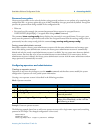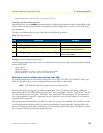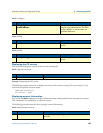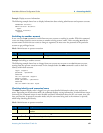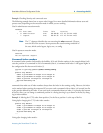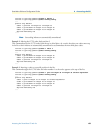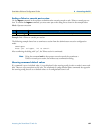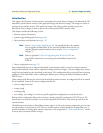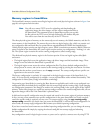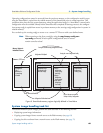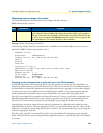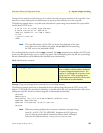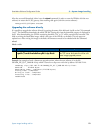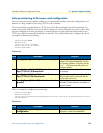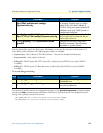
Introduction 66
SmartWare Software Configuration Guide 5 • System image handling
Introduction
This chapter describes how to load, maintain, and update the various software images in the SmartNode. The
SmartWare system software consists of the application image and the driver images. The images are stored in
persistent (non-volatile) memory. The application image is the software which actually operates the
SmartNode. Driver images are used to operate the various optional PMC interface cards.
This chapter includes the following sections:
• Memory regions in Smartware
• System image handling task list (see page 68)
• Boot procedure and bootloader (see page 74)
Note Section “System image handling task list” on page 68 describes the standard
way to upgrade the SmartWare. If you encounter problems that won’t let you
upgrade using the standard method, refer to section “Factory configuration”
on page 75.
Note Refer to appendix F, “Notes for upgrading from R3.10 to R3.20” on
page 618 for information on converting from SmartWare release R3.10
to R3.20
• Factory configuration (see page 75)
Patton SmartNode devices are shipped with default system software which is stored in persistent memory.
Along with the default system software (application image and driver images), a factory configuration, factory-
config, has been loaded into the SmartNode at the factory. This configuration file sets the initial basic operating
parameters of the SmartNode, such as enabling the Ethernet ports, setting the default IP addresses and the
DHCP server.
Other configuration files may be stored in the SmartNode persistent memory. A configuration file is an ordered
list of commands. Some of the various configuration files are
• factory-config (read-only)
• startup-config
• running-config
• user-config1, user-config2, etc. (these are specific application configurations created by the user)
Backups of the configuration files can be stored on a remote trivial file transfer protocol (TFTP) server. The
remote tftp server must be accessible via one of the SmartNode IP interfaces. Tftp cannot be used from the
console interface.
The following sections focus on SmartWare memory regions, as well as the software components you can copy
into the memory or move between a TFTP server and the memory of the SmartNode. As SmartWare uses a
specific vocabulary in naming those software components, refer to appendix A, “Terms and definitions” on 644
to ensure that you understand the concepts.



